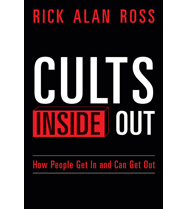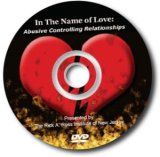Oprah, Tina bask in kinship during tour and interview.
USA Today/May 15, 1997
By Edna Gundersen
Talk show queen Oprah Winfrey is stalking Tina Turner as the Acid Queen continues her Wildest Dreams tour around the USA. After cheering at the May 1 opener, Winfrey stayed in Houston to air a live segment fulfilling a few of the wildest dreams women expressed in 80,000 letters. Now she’s trailing the tour to Las Vegas and Los Angeles, where Thursday night Turner performs the third of five concerts at the Greek Theater. Turner will appear on Winfrey’s show Friday. USA TODAY reporter Edna Gundersen caught up with the two stars during a break from the tour.
Houston — Publicists, managers and hangers-on bustle in the hallway as two of the nation’s most powerful and charismatic self-made women huddle behind closed doors.
“Girlfriend, check out these shoes!”
Oprah Winfrey, crouched on the floor of Tina Turner’s dressing room at Woodlands Pavilion, is marveling at a long row of identical black spike heels. Turner, in snug cream leather pants and loafers, erupts in giggles and sinks into a sofa to nibble on celery.
“I am her biggest groupie,” confesses Winfrey, sporting a shaggy Tina-like wig that Turner suggests needs major styling. “This is my first Tina concert ever. Somebody has to hold me back!” The talk show queen is stalking the Acid Queen for both cheap thrills and a noble purpose. Tina’s appearance on The Oprah Winfrey Show Feb. 21 inspired a series of shows honoring accomplished women. After cheering at the May 1 opener of Turner’s “Wildest Dreams” tour, Winfrey, 43, stayed in Houston to air a live segment fulfilling a few of the wildest dreams women expressed in 80,000 letters. She trailed the tour to Las Vegas and Los Angeles, where Thursday night Turner, 57, performs the third of five concerts at the Greek Theater. She’ll appear on Winfrey’s show Friday.
“It’s exactly the way I imagined it,” Winfrey says after she and her TV crew observe backstage prep. “Chaos, fun. If you didn’t love this work, you would be tired all the time.”
She could be talking about either job. The pair’s electric personalities and unstoppable drive only hint at deeper parallels. Both are Southerners who overcame poverty, abuse, racism, sexism and dispiriting career slumps.
Born in Nutbush, Tenn., Turner rose to fame while enduring abuse from her husband, Ike. After walking out in 1976 with only a handful of change, she turned to housekeeping and food stamps before her honeyed rasp caught the ear of manager Roger Davies. In 1984, Private Dancer returned her to stardom. Today, Turner’s song-and-dance workouts still fill arenas. The leggy Hanes mascot, Buddhist and mother of four sons lives in Switzerland and France with German record exec Erwin Bach, 40.
Winfrey, raised in rural Mississippi and a Milwaukee ghetto, was Miss Black Tennessee and a news anchor in Baltimore before building a TV empire in Chicago. On her top-rated weekday show (up to 20 million viewers a day), she has shared her weight battles and disclosed that she was raped by a cousin at age 9. The workaholic squeezes philanthropy, writing and acting into an annual schedule of 200 shows.
Q: How did this power merger come about?
Oprah: It was an infectious, spontaneous moment. I passed a monitor as Tina was rehearsing and was just taken aback by her aura and energy.
Q: Did your early struggles fuel a drive to achieve?
Oprah: I’m glad I was raised in Mississippi at a time when being colored and female meant (low) expectations. Now I’m grateful for my days of emptying slop jars, hauling water from the well and going to the outhouse and thinking I was going to fall in. It makes walking through the house with the many bathrooms and marble floors and great view that much better.
Tina: A friend told me, “If you never got truly wet you can’t appreciate being dry.” (Hardship) gave us strength and tenacity to break the rules and step into a new arena.
Q: Do either of you regret revealing so much publicly?
Oprah: No. I believe all pain is the same. So if Tina can overcome pain, it speaks to the possibility that all of us can. That’s the beauty of sharing.
Tina: For a while, I was ashamed to tell my story. Now people come up and say very softly and very quietly, “You’ve given me such a great inspiration.”
Q: People repeatedly ask why you didn’t leave sooner.
Tina: I was living in hell, and I wanted to get out, but you must build confidence and endurance so you don’t go back.
Oprah: When you look back, can you believe yourself? I was never in a relationship with anybody who hit me, but I remember a relationship in my 20s where he left and said he wasn’t coming back, and I was on the floor crying and begging and pleading. I thought, “I’m no different from a battered woman.” I kept a journal at the time, and not too long ago, (after) reading it, I sat in my closet and wept for the woman I used to be.
Q: How would you have advised Tina in her darkest days?
Oprah: I encourage women now to leave when he hits the first time. That’s when you have the most strength. Tina and I have similar stories, in that I was abused as a child because I didn’t know where the boundaries were. My need to please was so strong, and I had a fear of telling. Tina, when you left Ike, did you still fear he might come looking for you?
Tina: I knew he would, and he did. I prepared myself. When I saw him and his entourage, all his goons, he was so ugly. It was an ugly energy, like the Mafia. I had such strength then. I asked someone to get a gun for me, and I would have killed Ike if he had tried to force me back. I’m very happy I didn’t, but I had that much hate at that point. I was not going back. Later, I sat in his car, and we had a talk. The man was so scared, he kept fiddling with his hat. I was past him totally.
Q: Do painful experiences feed a reluctance to marry?
Tina: I don’t have a desire to marry. Erwin is wonderful. We are perfect just as we are. Why do I need to bring another element in for the sake of tradition? We are as married as we’d be if we had a ceremony. Besides, I want to keep my stuff mine and his stuff his. That’s the reality. I need that freedom.
Oprah: Ditto, absolutely. I really do feel that people want to see a wedding because they want to party and see the pictures. I have a wonderful relationship that works for me.
Tina: Is that your man I saw outside with your dogs? He’s very good-looking.
Oprah: Noooo. That guy is shmatteh compared to Stedman (Graham). You haven’t met him? Oh, you should see him. My guy is really great-looking.
Q: Does the culture’s obsession with age annoy you?
Tina: When you are in harmony, in sync, having a good time, nobody cares about age. I’m not paranoid about my age.
Oprah: Because she’s got those legs!
Tina: Age has nothing to do with my work. As long as I’ve got makeup, I’m not worried about face lifts, because there is too much risk that the surgeon might mess up.
Oprah: Oh listen, I’m just hoping 57 can do this for me. Look at her. She’s just the hottest! We have to go shopping.
Q: Are any of your wildest dreams unrealized?
Oprah: We have all the shoes. There is not another shoe left to buy in the world. You get more focused on the grandest vision for your life as a human being and how you share it.
Tina: My quest is an opening of that third eye over the planet. Once I get that, I plan to do what Oprah is doing, to let people know how they can control some of the suffering.






